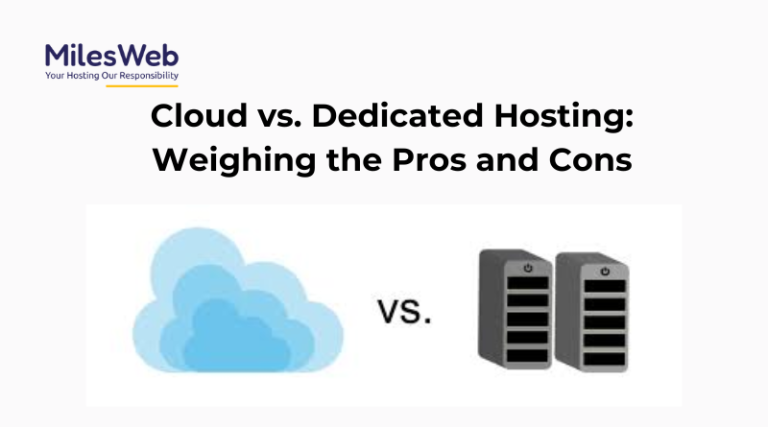The Hidden Layer of Cloud Hosting: Understanding Virtualization and How It Affects Performance
People nowadays think of managed cloud hosting services as the ultimate hosting solution. The reason behind this is that it has benefits such as greater speed, scalability, and reliability. Very few businesses understand the true reason behind the big leap in true cloud computing performance—and that’s virtualization. It’s the hidden engine behind cloud hosting, enabling one physical server to transform into a multi-tier cloud configuration. To understand cloud hosting in a more simplified way, let us discuss the components that make virtualization work.
Virtualization is the process of dividing a single physical server, even with the cheapest cloud hosting in India, into multiple individual virtual machines (VMs). Each VM works independently, as a server, with an OS of its own, its set of resources, and its geography. This geography eliminates interference between different websites and maintains performance stability even when there are several active consumers on the same machinery. This brings in better agility, faster processing, and more productive resource utilization.
How Virtualization Allocates Resources Efficiently
Under the traditional resource distribution paradigms, different sites are constantly competing for the available physical resources. This leads to disruptive slowdowns when one site dominates the resources and requires more usage than others. Virtualization prevents resource competition from happening. Each virtual machine is given a set amount of resources that are then measured and intelligently distributed using a hypervisor (it’s the software responsible for managing the virtualized environment).
The resource controller works like a traffic controller, keeping an eye on resource usage and distributing power where it’s needed the most. When your website gets additional traffic, the cloud can add more RAM or CPU on the spot without the operation being interrupted. The ability to manage resources on the fly is one of the main reasons cloud hosting can provide a more reliable and quicker service.
Stability Through Isolation
Among the many benefits of virtualization, complete isolation is one of the most notable. Even though many virtual machines might share the same physical server, each VM is kept in its own cage. When one website gets a traffic spike, the other websites will not suffer any performance loss. Likewise, if one VM gets hacked or infected with a virus, the other ones will still be safe.
Strong performance and security come with this isolation, and it’s the one in the defense of the system that is the most notable. Malicious movement to other accounts is not an easy task in virtual cloud environments. The hypervisor is in charge of any system-level changes to the websites, preventing a common issue found in basic shared hosting.
How High Scalability Actually Is
Virtualization leads to mobility on the cloud. In conventional environments, upgrading requires either switching to a new server or physically adding more hardware. But with cloud hosting, this is done through virtual resource provisioning. Scaling up or down is achieved with a click, and the hypervisor in turn adjusts your virtual machine’s resources.
This is important to modern websites, especially for e-commerce, SaaS applications, AI, and websites for businesses with highly variable traffic. With virtualization, websites become slow at peak hours but cost-effective during off-peak hours. This efficiency stems from the fact that the scaling is done on the virtual level.
Performance Doubled with Load Balancer and Redundancy
Virtualization is embodied in load balancing. A cloud serves a website that’s receiving multiple requests and divides them among several virtual machines or physical servers. This is done to avoid overloading of a single server. In combination with redundancy, whereby your site is duplicated across several servers, virtualization uplifts the uptime of your site, for instance, when servers fail.
Downtime Issues
Downtime is costly, especially for some websites. Virtualization offers seamless, uninterrupted hardware transitions and backup systems, so websites function normally without glitches. Also, stability is recognized by search engine algorithms, and uninterrupted availability contributes to stronger SEO performance.
Real-Time Optimization
Virtualization improves loading performance by minimizing latency, optimizing route optimization, and reallocating resources on websites. As a result, websites on virtualized cloud computers nearly always achieve higher Core Web Vitals, especially in areas of responsiveness and visual stability.
Optimizations and Competitive Advantage
Improved performance and resource management on virtualized cloud computers optimize SSD storage, data routing, and caching, and are key to handling loads and minimizing response times. Lower response times mean websites achieve better performance on Core Web Vitals, and this translates to better competitive rankings.
Protection of Data and Backups
Data is safer in modern cloud hosting, which MilesWeb utilizes. Backups can be instant with virtualized tools, allowing for quick restoration of websites following accidental deletions, malware infections, or configuration errors. Virtualization simplifies and speeds snapshots of entire VMs.
A site’s performance is also tied to how stable its data is. If a site keeps losing data or crashes frequently, then, regardless of how fast it is, it will be considered poorly performing. With automated systems, data virtualization enables uninterrupted business functions.
Another big plus is Easy, Stable, and Long-standing Email Communication.
Having integrated email hosting is also another benefit of having advanced cloud hosting. For example, MilesWeb gives its customers free email accounts synchronously with their hosting accounts, whereas most of their competitors charge a fee for email accounts after a year. With email hosting, businesses will not have to worry about losing their email service.
These seamless email services enhance business communication, as employees will be able to use their hosted email accounts without any service disruption. These advantages come due to no blackouts or service interruptions occurring and active cloud virtualization systems in motion.
Going Virtual, Leading the Way to the Future
Heavily integrated virtualization systems will be the epitome of hosting advancements. As the need for improved performance increases, the function of virtual machines is redefined. Other upcoming techs like edge hosting, serverless computing, and containerization are based on the use of virtualization systems.
Evolution will continue in cloud hosting, as the use of cloud tech will remain integral to improving performance by creating a hyper-efficient system.
Conclusion
The true performance of today’s cloud hosting is due to virtualization. Intelligent resource allocation, guaranteed isolation, instant scaling, and maintains the website’s uptime even during hardware failure.
The addition of automated backups, robust security, reliable email hosting, and virtualization creates a hosting environment ideal for meeting the demands of modern websites. Understanding virtualization is the first step toward leveraging the full power of cloud servers for businesses focused on speed, reliability, and continuous growth.





